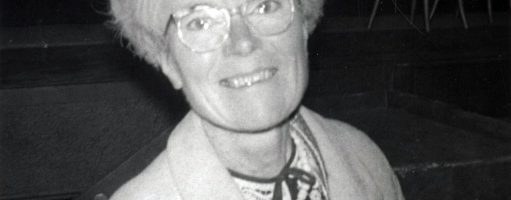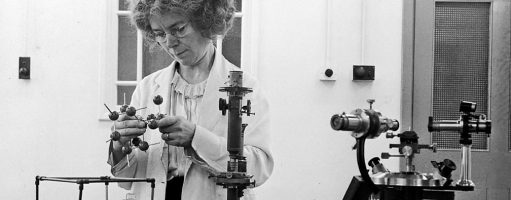When and where was she born?
Kathleen Yardley was born in County Kildare, Ireland on the 28 January 1903. In 1971, aged 68, Kathleen died of cancer in London.
Fun facts
- Kathleen married Thomas Lonsdale in 1927 and had three children;
- Alongside her husband she became a Quaker in 1935. She had three children;
- Lonsdaleite, an allotrope of carbon, was named in her honour; it is a rare harder form of diamond found in meteorites.
What’s important about her scientific work?
Kathleen developed the use of X-ray diffraction to study the structure of molecules and in 1929, she published her pivotal paper on the structure of the benzene ring in hexamethylbenzene. She was the first woman to achieve many accolades, and helped pave the way for future women scientists.

What do we know about her childhood?
Her parents ran the local post office and she was one of 10 children. They moved to England when she was 5. She earned her Bachelor of Science degree from Bedford College for Women in 1922 and graduated in physics with an MSc from University College London in 1924.
What struggles did she face?
- She was malnourished as a young child because her family could not afford enough food;
- She had to attend a boys’ school as the girls’ schools did not offer chemistry, physics and mathematics;
- She was a pacifist which was illegal, and as a result spent a month in Holloway prison during World War II.
What did she achieve?
- In 1949 she was appointed professor of chemistry and head of the Department of Crystallography at University College London. She was the first tenured woman professor at that college, a position she held until 1968.
- In 1956 she was made a Dame Commander of the Order of the British Empire;
- In 1966 she was elected first woman President of the International Union of Crystallographers.







